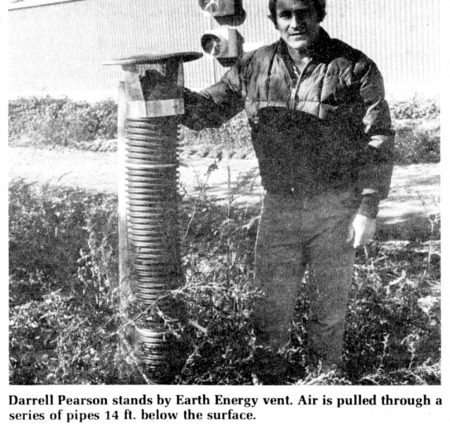
NORA SPRINGS, Iowa- Most of the new research and development involving alternative sources of energy, spurred by the skyrocketing prices of petroleum, has been directed upward, toward the sun.
But the founders of a development firm in Nora Springs have gone the opposite direction and are tapping the earth as a resource for heating and cooling systems.
Darrell Pearson and Rochus Leier, both former employees of the E. F. Johnson Co. at Waseca, are founders and officers of LPC Inc., a firm that is building heating and cooling systems that use the constant temperature of the earth.
"Don't say we invented the system," Pearson says, "even though to our knowledge we are the first to use earth energy in this manner. Nobody invents anything. The Lord put it here for man to discover."
What LPC founders "discovered" is a widely known fact -- down a few feet in the earth, below the frost line, the temperature remains constant year-round, usually in the range of 55 to 60 degrees.
"All we did was tap that source of energy and put it to use to cool or help heat farm and industrial buildings," Pearson says.
He said he and Leier left their jobs at Waseca to attempt to "get a foot in the door on solar energy." Joining them in founding the firm was Peter Lundberg.
"It was the solar energy thing that led us to the earth energy aspect," Pearson says. "We were looking for a means of storing collected solar heat for use after the sun went down. We thought of using the earth as a storage room. Then it dawned on us -- why not just use the heat already there in the earth. That's how our earth energy systems were discovered, not invented."
The system seems so simple that one wonders why it wasn't put to use long ago.
To air condition a building, trenches averaging 14 ft. in depth are dug into the earth. Plastic pipe, 6 or 8 in. in dia., is laid in the trenches. At one end is an air inlet that rises above the ground, and at the opposite end is a suction fan that pulls air through the underground pipes and into the building.
The air from the underground system can be circulated directly through a building to provide air conditioning. Even on the coldest days, the air coming through the underground system will be at about 45 degrees, requiring less fuel to heat it to a temperature range adequate for human or animal comfort.
Pearson said LPC has installed five earth-cooled air conditioning units and has contracts for two more. The system is so new, he said, that the firm is just now setting up a sales organization.
Jim Rule, a farmer in Nora Springs, which is located about 12 miles east of Mason City, installed an earth system this past winter. It features a grid of underground pipes with several risers for air inlets. The air coming through the underground grid is heated by two LP-gas furnaces.
Rule estimates the system saved him an average of $5 a day in heating costs for his hog nursery. He calculates the system will pay for itself in four years.
"In figuring the BTU (British Thermal Unit) output versus the investment cost, it beats anything on the market today," he says.
The biggest application of the earth energy system will be in farm and industrial buildings, and not in urban homes, Pearson says.
"It wouldn't be impossible for a home system, but because of the room needed for maneuvering a large trench digger, it would be difficult. Most urban lots are not big enough to allow such work.
"The system's real benefit in a home would be in producing a constant flow of fresh air and in producing a positive pressure instead of a negative pressure usually found in most homes," he says.
The negative pressure results from furnace combustion and the loss of heated air through the chimney. Cold air flows into the house through doors, windows and cracks to compensate for the negative pressure.
"Equalizing the pressure with fresh air drawn through an earth system would eliminate the suction of cold outdoor air into a house," Pearson says. "This equalizing pressure could save a homeowner as much as 30 percent on his fuel bill."
He said the firm has installed a system in a home equipped with a heat pump, a device that does not operate efficiently when the outside temperature drops below 15 degrees.
Pearson said for installation of a system for a residence of 1,500 sq. ft. of floor space, it would require about 1/6 of an acre of land to lay the grid of underground pipes. A house of that size, he said, would need 6 rows of pipes, each 150 ft. in length, with about 8 ft. of space between pipes.
Pearson is a graduate engineer and vice president of LPC Inc.
